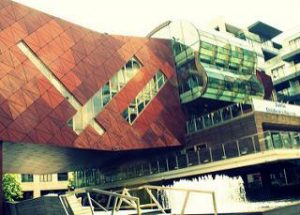Why Pursue LEED Certification?
 Modern construction continues to be strongly influenced by the need to design, build and operate structures with energy conservation and environmentally green performance in mind. Designers, contractors, builders and other construction professionals can achieve independent third-party verification of green building status through LEED (Leadership in Energy and Environmental Design), a voluntary evaluation and certification program for building and construction projects. Those who want to pursue LEED certification for their projects will produce individual structures or entire communities with dramatically increased environmental benefits, energy conservation levels and health-promoting characteristics of indoor spaces.
Modern construction continues to be strongly influenced by the need to design, build and operate structures with energy conservation and environmentally green performance in mind. Designers, contractors, builders and other construction professionals can achieve independent third-party verification of green building status through LEED (Leadership in Energy and Environmental Design), a voluntary evaluation and certification program for building and construction projects. Those who want to pursue LEED certification for their projects will produce individual structures or entire communities with dramatically increased environmental benefits, energy conservation levels and health-promoting characteristics of indoor spaces.
If you pursue LEED certification, you will be applying consensus-based standards that are shaped by the needs of individual construction markets. These standards provide practical, measurable methods of increasing green building practices throughout all phases of the construction life cycle. Planning, design, construction, operation and maintenance can all be improved by using LEED standards.
LEED-certified buildings and construction projects are certified as having used techniques and strategies that lead to the highest level of performance possible in the areas of:
- Energy efficiency and conservation
- Water conservation and savings
- Human and environmental health
- Sustainable site development
- Materials selection
- Indoor environmental quality
LEED-certified buildings possess favorable characteristics that increase building and site values, improve chances of receiving tax rebates or other incentives, lower overall operating costs, reduce the amount of solid waste generated and committed to landfills, reduce greenhouse gas emissions and create safer, more healthful indoor environments for building occupants.
LEED was originally started by the U.S. Green Building Council (USGBC) and is based on standards established and agreed to by the USGBC and several domestic LEED committees and international roundtables. Certification is achieved through the Green Building Certification Institute (GCBI).
Types of buildings that can be LEED certified
To pursue LEED certification, your new construction or major renovation project can consist of:
- Office buildings
- Retail and service facilities
- Hospital and health care facilities
- Libraries
- Schools, including administration buildings
- Museums
- Churches and religious institutions
- Hotels and hospitality businesses
- Residential buildings, from single-story family dwellings to high-rise apartments
Criteria for LEED certification
A contractor, owner or operator who wants to pursue LEED certification must produce individual buildings or neighborhoods that earn a minimum of 40 points on an established LEED rating scale of 110 points. Homes must achieve 45 points on a 136-point rating scale.
The LEED 110-point scale awards weighted scores in five areas:
- Sustainable Sites (21 possible points) – This category looks at and encourages factors and characteristics such as avoiding developing on previously undeveloped land, minimizing the impact on local ecosystems and waterways and opting for regionally appropriate landscaping.
- Water Efficiency (11 possible points) – This category encourages water conservation and the use of low-flow fixtures and water-saving plumbing system components.
- Energy and Atmosphere (37 possible points) – This category supports construction features and design that conserve energy; the use of energy-efficient appliances, lighting and equipment; ongoing monitoring of energy use; and the overall use of renewable green energy sources.
- Materials and Resources (14 possible points) – This category urges the selection of building materials that have been grown in sustainable environments and harvested, produced and transported in energy-efficient ways. This category also encourages methods of reducing waste and recycling materials where possible.
- Indoor Environmental Quality (17 possible points) – This category supports equipment, techniques and features that improve indoor air quality, make better use of natural lighting and produce improved indoor acoustics.
The scale also allows for up to 10 bonus points concerning region-specific environmental issues and other factors.
What certification requires:
To pursue LEED certification, go to the LEED Online website to learn more about the program and register your project.
Our goal is to help educate our customers about Plumbing, HVACR, Fire Protection and Alarm Systems in Mechanical, Commercial and Residential settings. For more information about the importance of LEED certification and application and to view projects we’ve worked on, visit our website!
Image Credit: Jude Doyland







